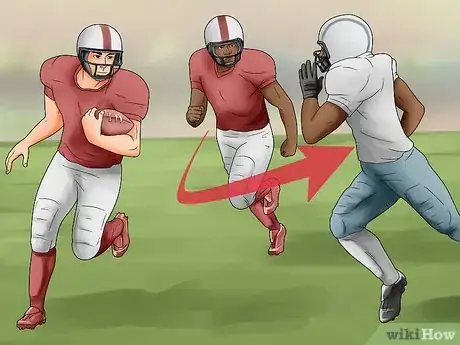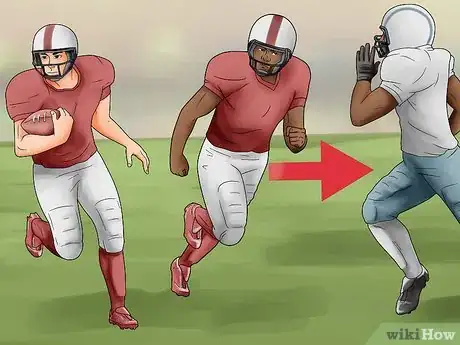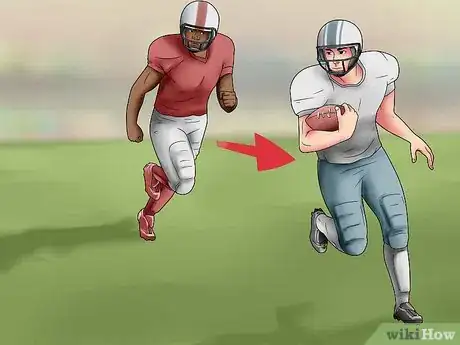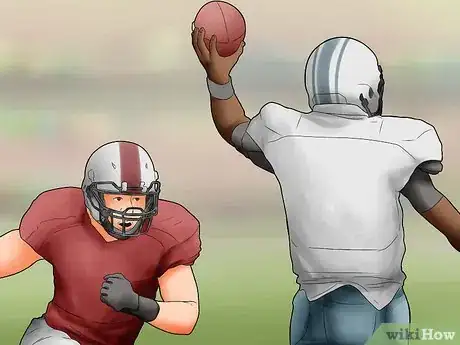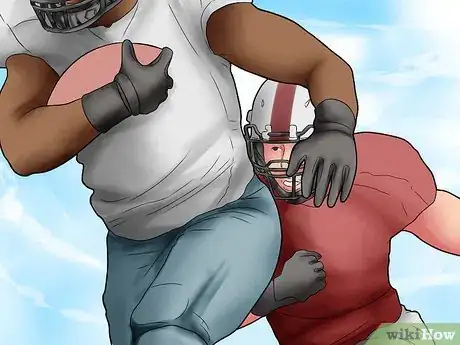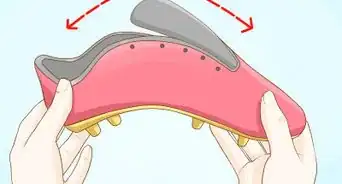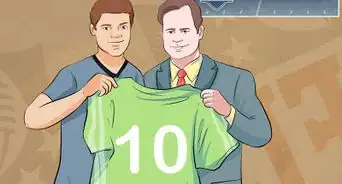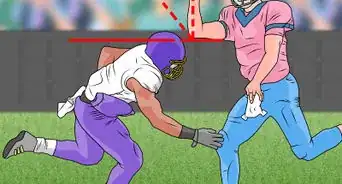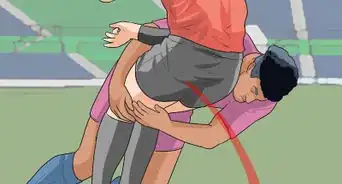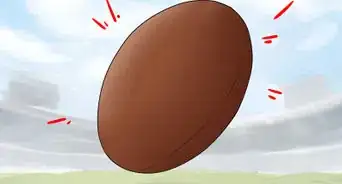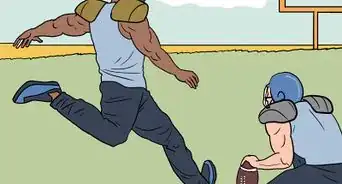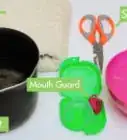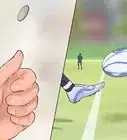wikiHow is a “wiki,” similar to Wikipedia, which means that many of our articles are co-written by multiple authors. To create this article, 15 people, some anonymous, worked to edit and improve it over time.
wikiHow marks an article as reader-approved once it receives enough positive feedback. In this case, 83% of readers who voted found the article helpful, earning it our reader-approved status.
This article has been viewed 106,506 times.
Learn more...
The position of outside linebacker (OLB) in American football is one of the more diverse and demanding positions in a defensive line. Due to the amount of space on the field linebackers are expected to cover, the variety of responsibilities is greater than many other positions. This has resulted in a greater division of linebacker types, even amongst the single position of outside linebacker.[1]
Steps
Playing Strong-Side Outside Linebacker
-
1Play on the strong side of the formation. The outside linebacker on the strong side of the formation is often referred to as the Sam.[2] Using the offensive center (the one who hikes the ball) as the middle line, the strong side of an offense is the side where more players lined up with the offense’s tight end usually among the strong-side players.[3]
-
2Take on the lead blockers. The lead offensive blockers will try to hang up the defense and route the defensive line to make holes for running backs or tight ends. In addition to the rest of the defensive line, the Sam has to help close the gaps created and maintained by lead blockers.[4] One of the keys to taking on lead blockers is in the “hit and shed” maneuver where a linebacker makes contact with a blocker then disconnects while maintaining the proper position.[5]
- The correct stance for this requires the feet pointing forward just over shoulder-width apart, weight on the balls of the feet, back straight, head up, and knees flexed.[6]
- Make contact with the side of the leading foot. To maintain balance, contact the blocker with the shoulder, forearm, or hand on the same side as the leading foot.[7]
- Keep hips low and push upward on the blocker with the legs rather than simply upper body strength.[8]
- By keeping the hips and stance low, the linebacker can equally keep his pads low, which helps to get under and uproot the blocker, thus allowing him to disconnect with the blocker and reassess the next movement for the play.[9]
- The positioning to get under the pads and through the offensive blockers is very important for outside linebackers because the tackles and guards with whom they make contact often have distinct weight advantages.
Advertisement -
3Contain the running back. If a quarterback calls a running play, that means he’ll hand off the ball to the running back who will then try to find a hole in the defensive line. One of the duties of the Sam is to plug just such a hole in the defensive line to tackle the running back and stop him from getting through on the strong side.
-
4Cover the tight end. In addition to covering the running back in a rushing play, the Sam also needs to remain adaptable to covering the tight end who usually plays from the strong side of the offensive formation. Depending on the play, the tight end’s job can be to help stop the defensive line from blitzing the quarterback, block the defensive line to help make a hole for a running back, or to get open as an outlet receiver for when a quarterback doesn’t have time to complete a pass to a wide receiver. The Sam takes on the tight end in nearly every play, so he must quickly adapt to the role the tight end takes on any given play.
- In the event that the tight end does manage to get open as an outlet receiver and the quarterback does complete a pass to him, it’s also the Sam’s job to tackle the tight end as soon as the pass is completed.
Playing Weak-Side Outside Linebacker
-
1Cover cut-back running backs. The weak-side linebacker (commonly referred to as Will) is not by any means a weaker player, simply playing from the less-covered side without having to worry about the tight end. A running back who has been handed the ball may often cut to the weaker side of the formation depending on the play, in which case it is the Will’s job to tackle and halt progress of the ball.
- Wills are often a bit lighter and faster than strong-side outside linebackers and middle linebackers. While the other two are akin to hammers pounding the lead and secondary blockers, the Will’s job is to penetrate and make a play on the ball.[10]
-
2Prevent passes to running backs or fullbacks. Many plays may call for a running back or fullback to come out of the backfield to act as an outlet receiver in the event that a quarterback senses trouble before being able to complete a longer pass. In these cases, it’s the Will’s job to cover the back to prevent a pass or at least tackle the back immediately after the pass is completed.
-
3Blitz the quarterback. Because it’s the Will’s job to exploit holes created by the rest of the defensive line to attack the ball, weak-side outside linebackers make their fair share of quarterback sacks.
Community Q&A
-
QuestionWhat does the middle linebacker do?
 Community AnswerThe middle linebacker's focus is to either rush the quarterback or to cover a receiver or back.
Community AnswerThe middle linebacker's focus is to either rush the quarterback or to cover a receiver or back. -
QuestionWhat are all the exercises a linebacker needs?
 ManuelCommunity AnswerLinebackers are meant to rush the quarterback, cover passes, and stop runs. To be a good linebacker, you need a good combination of strength, agility, and speed. Linebackers must have a strong lower body as well as a strong core. But they must also have a strong upper body, in order to push past any blockers and to tackle the ball carrier. Some good exercises include bench press, deadlifts, squats, power clean, weighted sit-ups, and leg presses. These are just some exercises you can do for strength. In addition to strength training, I would recommend jogging to build more endurance.
ManuelCommunity AnswerLinebackers are meant to rush the quarterback, cover passes, and stop runs. To be a good linebacker, you need a good combination of strength, agility, and speed. Linebackers must have a strong lower body as well as a strong core. But they must also have a strong upper body, in order to push past any blockers and to tackle the ball carrier. Some good exercises include bench press, deadlifts, squats, power clean, weighted sit-ups, and leg presses. These are just some exercises you can do for strength. In addition to strength training, I would recommend jogging to build more endurance.
Warnings
- Remember to keep your head up. Making contact with your head down is a way to cause serious injury.⧼thumbs_response⧽
- This is an especially contact-heavy position. Contact players with the correct form to avoid injury and seek medical attention for injuries, especially suspected concussions.⧼thumbs_response⧽
Stay home on a play that goes the other way in preparation for a reverse or RB pass or similar trick play
References
- ↑ https://www.profootballfocus.com/blog/2012/05/30/defensive-prototypes-linebackers/
- ↑ https://www.profootballfocus.com/blog/2012/05/30/defensive-prototypes-linebackers/
- ↑ http://www.footballoutsiders.com/info/glossary_general
- ↑ https://www.profootballfocus.com/blog/2012/05/30/defensive-prototypes-linebackers/
- ↑ http://www.shakinthesouthland.com/2011/3/24/2064413/linebacker-fundamentals-hit-shed
- ↑ http://www.shakinthesouthland.com/2011/3/24/2064413/linebacker-fundamentals-hit-shed
- ↑ http://www.shakinthesouthland.com/2011/3/24/2064413/linebacker-fundamentals-hit-shed
- ↑ http://www.shakinthesouthland.com/2011/3/24/2064413/linebacker-fundamentals-hit-shed
- ↑ http://www.shakinthesouthland.com/2011/3/24/2064413/linebacker-fundamentals-hit-shed

